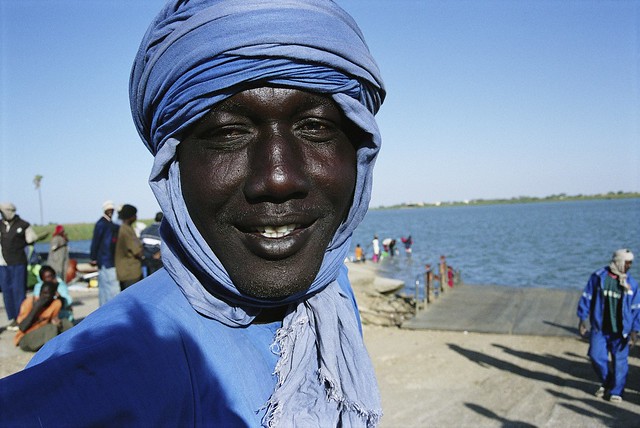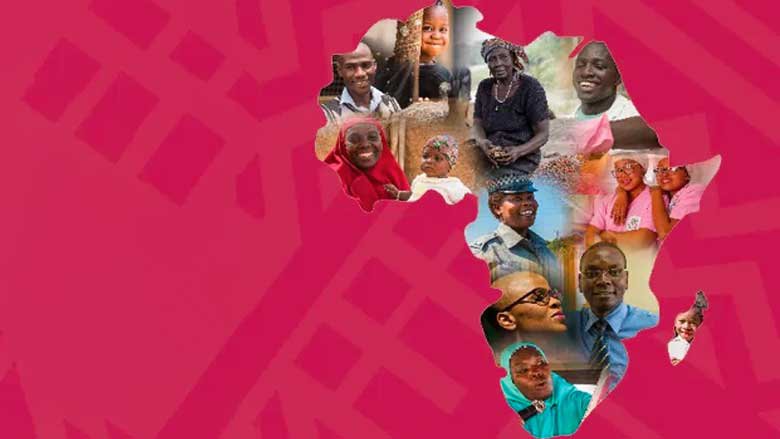The Democratic Republic of Congo (DRC), about the size of Western Europe, is the largest country in Sub-Saharan Africa (SSA). DRC is endowed with exceptional natural resources, including minerals such as cobalt and copper, hydropower potential, significant arable land, immense biodiversity, and the world’s second-largest rainforest.
Most people in DRC have not benefited from this wealth. A long history of conflict, political upheaval and instability, and authoritarian rule have led to a grave, ongoing humanitarian crisis. In addition, there has been forced displacement of populations. These features have not changed significantly since the end of the Congo Wars in 2003.
DRC is among the five poorest nations in the world. An estimated 74.6% of Congolese people lived on less than $2.15 a day in 2023. About one out of six people living in extreme poverty in SSA lives in DRC.
Political Context
The country concluded general elections in December 2023, leading to a second 5-year term for incumbent President Tshisekedi, but a majority is yet to be negotiated in Parliament to form a government. Reaching political consensus, increasing the presence and credibility of the state, including through improved governance, and advancing structural reforms are key to maintaining stability and peace, attracting investments, and creating jobs.
In recent months, the security situation in North Kivu and Ituri provinces has deteriorated dramatically, with fighting between the army and armed groups forcing thousands to flee. Other pockets of insecurity have emerged in the country, notably as a result of intercommunal conflicts.
Economic Situation
After peaking at 8.9% in 2022, real GDP growth in the DRC remained robust at 7.8% in 2023, supported by a strong mining sector, which grew by 15.4% contributing around 70% to overall growth in 2023.
Agriculture production slowed to 2.2% growth in 2023 (from 2.4 % in 2022). On the demand side, growth was led by private investment and exports, while inflationary pressures caused private consumption to contract, potentially impacting poverty reduction. The current account deficit deteriorated to 6.3% of GDP in 2023, from 4.9% in 2022, owing to higher import prices. The exchange rate depreciated by 21.6 % in 2023 and inflation accelerated to 19.9 % on average in 2023 (up from 9.2% in 2022).
GDP growth is expected to moderate to 6% in 2024 and to stabilize around 5.8% over 2025-26, driven by the mining sector. With the agriculture sector employing over 60% of DRC’s work force, the economy’s vulnerability to climate change-related risks (floods, droughts) is substantial. Finally, an escalating war in the East and continued political volatility could undermine the ability to advance with ambitious structural reforms efforts. To mitigate these risks, DRC’s immediate challenge is to strengthen security and maintain political and macroeconomic stability while building strong institutions to ensure sustainable growth.
Social Context
DRC ranks 164 out of 174 countries on the 2020 Human Capital Index, reflecting decades of conflict and fragility, and constraining development. DRC’s Human Capital Index is 0.37 which is below the SSA average of 0.4. This means that a Congolese child born today can expect to achieve only 37% of their potential, compared to what would have been possible if they had benefited from a full, quality schooling experience and optimal health conditions. The main contributors to the low score are low child survival rates under age five, high child stunting, and low quality of education.
DRC has one of the highest stunting rates in SSA (42% of children under age five), and malnutrition is the underlying cause of almost half of the deaths of children under the age of five. Unlike other African countries, the prevalence of stunting in the DRC has not decreased over the past 20 years. Due to the very high fertility rate, the number of stunted children has increased by 1.5 million.
The DRC is home to a diverse array of indigenous peoples (IPs) who have faced a range of challenges, including forced displacement from their ancestral lands, discrimination, and lack of access to basic services such as healthcare and education. Despite these challenges, IPs in the DRC continue to play an important role in preserving the country's cultural diversity and promoting sustainable resource management practices. While efforts are being made to recognize and protect the rights of IPs, much more needs to be done to ensure their full participation in society and the protection of their traditional ways of life.
Access to education has improved considerably over the past two decades, especially for girls and at earlier ages. Between 2000 and 2017, primary net enrollment increased by 50%, from 52% to 78%. However, the completion rate at the primary level remains low at 75%. The quality of education is extremely poor with an estimated 97% of 10-year-olds in DRC being in learning poverty, meaning they cannot read and understand simple text.
Congolese women face significant barriers to economic opportunities and empowerment, including high rates of gender-based violence (GBV) and discrimination. Only 16.8% of women have completed secondary school—about half of the rate of completion for men. Early marriage and high fertility rates represent a challenge, where women and girls without any education have a fertility rate twice that of women who complete secondary school (7.4 children compared to 2.9 [DHS 2014]). Half of women report having experienced physical violence, and almost a third have experienced sexual violence, most commonly at the hands of an intimate partner (DHS 2013).
Women’s labor force participation rate in the DRC is estimated at almost 62%, most of whom work in agriculture. While participation is relatively high, women earn considerably less than men and own fewer assets. A 2021 DRC Gender Diagnostic Report identifies three major factors contributing to persistent and significant gender gaps: control over land, voice and agency, and risk and uncertainty including vulnerability to shocks and GBV.
DRC’s health care systems have been greatly impacted by its own protracted conflict, as well as by the continued long-standing complex humanitarian crises in the world. This has been greatly exacerbated by the COVID-19 pandemic and by recurrent disease outbreaks such as cholera, measles, and Ebola. There has been significant COVID-19 vaccine hesitancy in DRC, with limited demand, and there is evidence that COVID-19 has had a negative impact on the utilization of health services since March 2020 with a decrease in hospital visits, a reduction in the number of antenatal care visits, reduced access to family planning and contraception, increased food insecurity, as well as increased incidence of sexual and GBV. Close to 23 million children missed out on routine vaccinations in 2020 due to the pandemic, the highest number in more than a decade, according to recent WHO/UNICEF data. This highlights the disruption COVID-19 has had on health systems and a concern that the temporary interruption of basic healthcare delivery will likely lead to a secondary health crisis, if not addressed.
Last Updated: Apr 08, 2024









